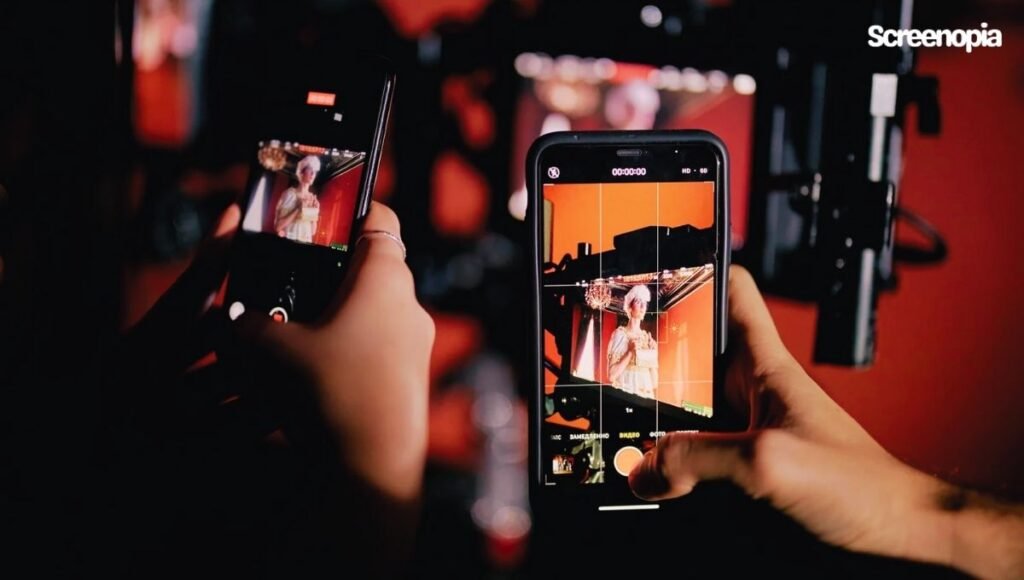In today’s digital world, it feels like we’re always surrounded by videos, movies, and shows. We can watch almost anything we want, anytime, anywhere. But with all these choices, people have started calling everything ‘content.’
So, what’s the real difference between ‘content’ and actual ‘cinema’?
Why should it matter to us?
Let’s break it down in simple terms and talk about why ‘Content vs. Cinema’ is a debate worth having.
Content vs. Cinema: The Rise of Content
‘Content’ is a word we hear everywhere now. Whether it’s a funny TikTok, a quick YouTube video, or a meme, it all gets labeled as ‘content.’ It’s stuff we watch while eating lunch, waiting for the bus, or just killing time.
What Makes Content Special?
- It’s always there: You can find content anytime, anywhere. Most content is made for phones, with quick edits and vertical videos that fit our screens.
- Quick and easy: You don’t need to make special plans to watch a TikTok or an Instagram Reel. It fills the little moments throughout your day.
- Algorithm rules: Creators pay close attention to what gets clicks, likes, and shares. They follow what the platform algorithms want to show more people.
- Lots of it, fast: Popular content creators often post every day or several times a week. It’s about the number of posts, not spending months perfecting one video.
- Direct interaction: Content creators often talk straight to their viewers. You can comment, like, and sometimes even chat or suggest ideas for their next video.
So, ‘content’ is fast, fun, and interactive, a constant part of our lives.
Content vs. Cinema: The Power of Cinema
Cinema is what most people think of as a real ‘movie.’ It’s where directors and actors put tons of time and care into telling a story. Good cinema makes you feel something deeper, stays with you, and sometimes even changes the way you see the world.
Why Is Cinema Different?
- Careful craftsmanship: Every shot, sound, and color in a true movie is chosen with care. Directors treat each scene like art, planning everything so it has meaning.
- Full attention needed: Cinema wants you to sit down and give all your focus, often for two hours or more. The idea is for you to enter another world and get fully absorbed.
- Artist’s vision: Most movies start with what the director wants to say about life, society, or emotions. They aren’t just chasing quick clicks; they want to tell a story that matters.
- Emotional impact: The best movies stick with us, get talked about for years, and sometimes become a part of our culture.
Cinema takes time, talent, and heart; it’s more than just something to watch when you’re bored.
Content vs. Cinema: Where Lines Blur
These days, the difference between content and cinema isn’t always clear. Streaming services, short films, and social media have shaken things up.
- Streaming mixes both: Platforms like Netflix give us high-quality movies and series right at home, mixing cinema’s quality with content’s convenience.
- Short films level up: Some YouTube creators make short videos with cinema-quality storytelling. It shows that ‘content’ can sometimes look and feel just like a classic movie.
- Cinema borrows content tricks: Some movies use ideas from social media, like talking straight to the audience or using webcams, blending content style with cinematic depth.
The line between content and cinema is getting fuzzier, but the difference still matters.
Why ‘Content vs. Cinema’ Matters
You might wonder: Why should I care about the difference?
Here’s why it’s important:
- Set the right expectations: When you know what you’re watching, you can enjoy it for what it is. A quick TikTok will entertain you, but a movie might move you deeply.
- Preserve unique experiences: Going to a theater, sitting in the dark, and sharing a story with others is special. If we treat all movies like regular “content,” we might lose these moments.
- Support the creators: Content creators and filmmakers work in different ways. Understanding this helps us support both, maybe you subscribe to a creator or buy a ticket to a movie.
- Smart choices: Being able to tell the difference makes us better media consumers. You’ll know when to scroll for quick laughs or when to settle in for a cinematic experience.
Finding Balance in Content vs. Cinema
The trick is to find a healthy mix in your media diet:
- Make time for movies: Reserve evenings or weekends to really watch and enjoy a film, with your phone off and distractions aside.
- Enjoy content: Don’t feel bad about binging quick videos, they connect us and keep us in the loop.
- Try different things: Mix up short clips with longer, meaningful films. Follow creators who tell cool stories and directors who make you think.
- Show your support: Want more great movies? Buy tickets, watch them in theaters, or subscribe to the platforms that make them possible. Love a content creator? Follow, subscribe, or even donate.
Conclusion: Why Content vs. Cinema Is Still Important
Both ‘content’ and ‘cinema’ have their place in our lives. Content connects us with trends, communities, and creators. Cinema gives us unique stories, emotional depth, and artistic visions.
By knowing the difference, we get the most out of both. In a world full of fast entertainment, understanding ‘Content vs. Cinema’ helps us keep cinema alive as an art form and enjoy digital content for what it is.
Don’t pick sides; make space in your life for the quick scroll and the big-screen experience both.
That way, you’ll appreciate everything our media world has to offer.



